Signature
Edgar Degas signed his artworks eponymously with his last name Degas. He typically signed only when his artwork was leaving the studio for sale. For many of these works, he used a stamp. Given that he was always reluctant to part with his art and that many never-before-seen artworks were discovered in his residence upon his death, a substantial number of original Degas artworks are unsigned. A few Degas originals were also signed on his behalf by dealers, but such signatures must be considered very dubiously. Regardless, a signature is never the only grounds by which a painting can be authenticated, and even when it does appear to be authentic, can only be considered as a secondary supporting factor—given the proliferation of quality forgery. Painted signatures or drawn autographs were more common earlier in Degas' career but still occurred with frequency, particularly on sketches and paintings of dancers, due to their popularity. Below are several examples of various appearances where the artist signed by charcoal, pencil, or paintbrush.
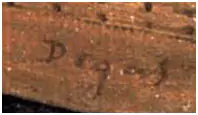
Signature with charcoal, 1860
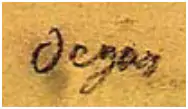
Signature with brush, 1870
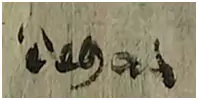
Signature with brush, 1879
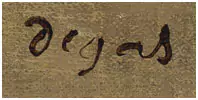
Signature with brush, 1879
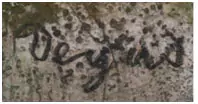
Signature with charcoal, 1880

Signature with pencil, 1905
Many of Edgar Degas' drawings, prints, and even some paintings feature a stamp of his studio or estate. In his earliest years, he used a black "Atélier Degas" stamp. The frequently seen "Degas" stamp in red ink was used by his estate. Works featuring this stamp were in the artist's residence upon his passing.

Early "Atélier Ed. Degas" stamp
